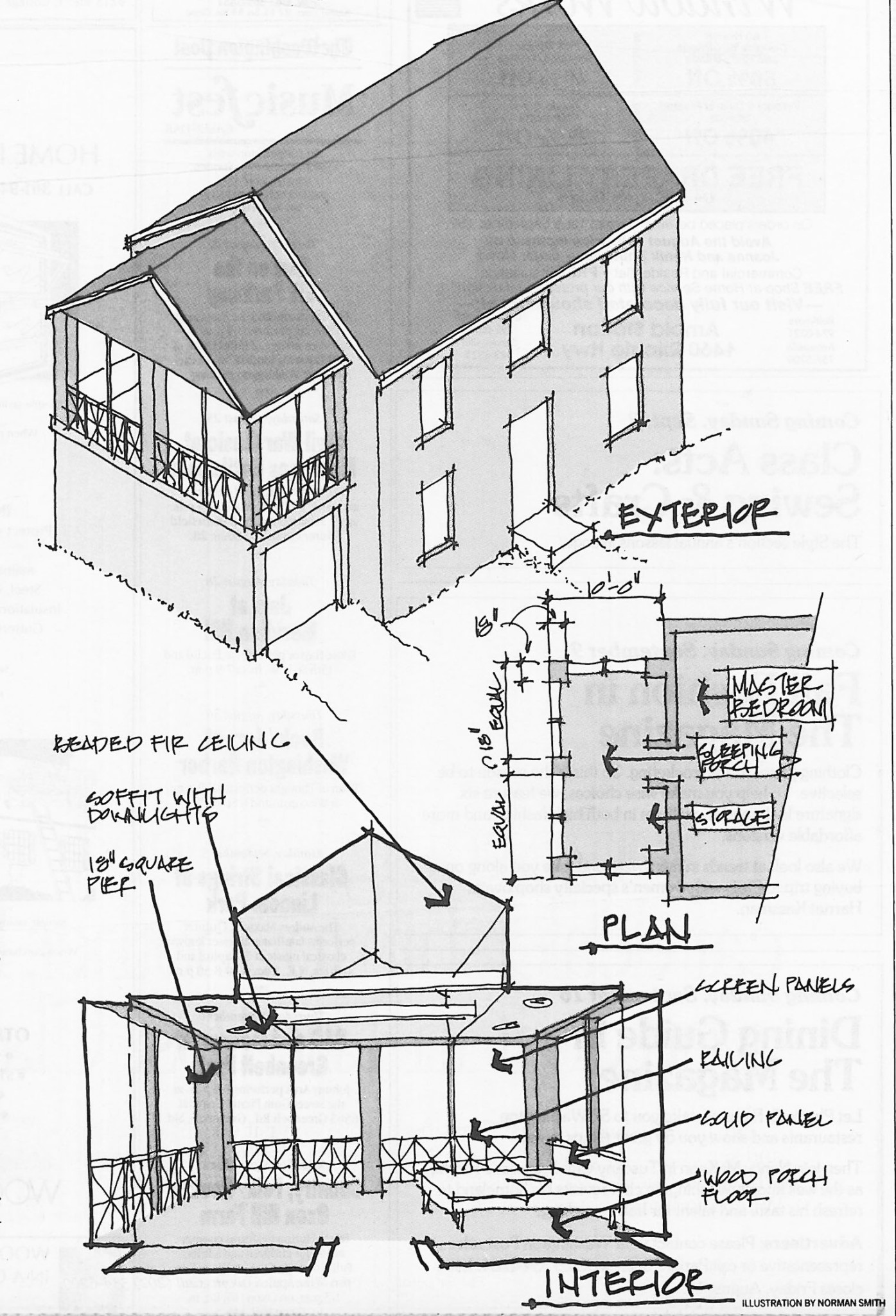The Sleeping Porch, Revived
A Traditional Room for Natural Cooling Can Be Built on Top of a Garage
Those of us accustomed to air conditioning find it hard to imagine trying to sleep through hot summer nights without it. Nonetheless, in the old days people did survive by using fans or, if their house had one, moving out to the sleeping porch. With renewed interest in the wise and efficient use of energy, the sleeping porch is an idea worth reconsidering.
This project uses an existing one-story garage as the base for constructing a second-floor sleeping porch off the master bedroom of a colonial-style house. The garage’s thick brick walls become the foundation for the porch, which is framed and trimmed with wood and designed to resemble an open pavilion.
As with any remodeling project, the first step is to have the existing structure inspected by a licensed architect or engineer to determine whether it is capable of supporting a second story. The next is planning and design, using the plan dimensions, or “footprint,” of a garage. This garage is a standard size, about 10 feet wide and 20 feet long.
Since the porch is open but screened, there are really no walls to speak of. Instead, the 20-foot dimension is divided into two equal spaces with three thick piers, each about 18 inches square (one at each corner and one in the center). The same piers are used at either end of the 10-foot side, and that 18-inch depth extends along the house wall as two enclosed storage spaces for mattresses and other bedding.
A system of railings, 36 inches high, extends between the piers around the perimeter of the porch. Solid panels, also 36 inches high, are placed inside the rail behind the bed or mattresses; more panels can be used for greater privacy.
Before the sleeping porch is added, the original roof of the garage must be removed, then reframed and topped with a new “flat” (slightly sloped) roof. The roofing material can be painted metal, copper or one of the new synthetic rubber membrane roof systems. The walking surface, or porch floor, laid on top of the flat roof, consists of pressure-treated wood decking like that typically used in porches and decks. The decking boards are spaced apart slightly to allow any rainwater to run through onto the roofing material and down to the ground.
The piers are framed with 2-by-4 studs, and the overhead gabled roof with 2-by-10 rafters. The slope of the gabled roof and the roofing material match those of the main house. Between the piers, smaller vertical boards from 2-by clear fir or other trim-grade lumber support the railings and provide a nailing surface for the solid panels and screened panels. The interior ceiling and soffits are finished off with a painted beaded fir. Exterior-rated downlights are placed in the soffits.
Norman Smith practices in the Washington area. For help with your design problems, send snapshots and dimensions to him in care of info@taurusdev.com
